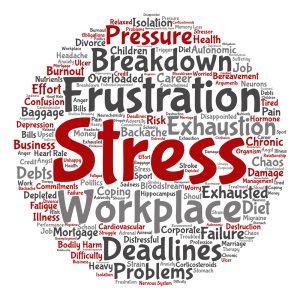
In an age where mental health and mindfulness are at the forefront of public consciousness, the Emotional Freedom Technique (EFT), alternatively known as tapping, emerges as a powerful tool in managing negative energy and enhancing overall well-being. This method, grounded in the ancient knowledge of meridians, combines elements of cognitive therapy with finger tapping on specific eft tapping points, aiming to restore energy flow and foster emotional healing. Its rising popularity among healthcare professionals and individuals alike underscores its significance in contemporary practices of health and mindfulness, highlighting EFT’s role in addressing the ubiquitous challenge of maintaining mental health in a fast-paced world.
The ensuing article delves into the essence of EFT, elucidating its principles and the scientific rationales underpinning its efficacy. A comprehensive exploration of negative energy and its impacts sets the stage for understanding why EFT tapping is an invaluable resource in the toolkit for mental health care. Following a detailed exposition on the benefits of EFT for removing negative energy, the text offers a step-by-step guide to EFT tapping, including a detailed EFT tapping sequence that readers can employ. Addressing common challenges and providing tips for effective EFT tapping enhances the utility of this piece. To inspire and motivate, real-life success stories demonstrating the transformative power of EFT in overcoming eft tapping for anxiety and other mental health challenges are shared. This article aims to furnish readers with insights and practical knowledge to master EFT, empowering them to navigate their journey toward emotional freedom and improved mental health with confidence.
Also if interested in training others to utilize EFT, please review AIHCP’s EFT Practitioner Certification and see if it matches your academic and professional goals.
What is Emotional Freedom Technique (EFT)?
Emotional Freedom Technique (EFT), also known as tapping, is a method used to manage emotions, troubling thoughts, and reduce stress and anxiety. This technique involves tapping fingertips on specific points on the hand, head, and torso, similar to acupuncture points, to help calm feelings such as anger or worry. EFT is recognized as an alternative treatment for physical pain and emotional distress, often described as psychological acupressure.
The process of EFT begins with identifying the issue, followed by tapping on designated meridian points while focusing on the emotional or physical pain. This tapping aims to balance the energy system of the body, which, according to its proponents, can alleviate symptoms caused by negative experiences or emotions. The technique is grounded in the principles of Chinese medicine, which asserts that these meridian points are pathways through which energy flows, affecting overall health. Imbalances in this flow are believed to contribute to disease and discomfort.
Despite its growing popularity and use in treating conditions like anxiety and post-traumatic stress disorder (PTSD), the effectiveness of EFT is still a subject of research. It is vital to note that while EFT can be a valuable tool for emotional and physical relief, it should not replace professional medical advice for serious health issues. Proponents of EFT argue that tapping helps to access the body’s energy and send signals to the brain that control stress, thereby restoring balance to disrupted energy and reducing negative emotions.
In practice, EFT combines elements of cognitive therapy with physical stimulation of acupressure points. The method involves a setup statement that acknowledges the problem while promoting self-acceptance, followed by tapping on key acupressure points. This combination aims to reduce stress and anxiety effectively, providing a non-pharmacological and cost-effective approach to managing symptoms.
EFT is easy to learn and can be applied as a self-help technique, making it accessible to a wide range of individuals seeking relief from various psychological and physiological challenges.
Understanding Negative Energy
Negative energy, though immeasurable, is commonly felt and can originate from various sources such as people, environments, or one’s own thoughts. This type of energy is known to cause both mental and physical exhaustion, perpetuating itself and thereby breeding more negativity. It is crucial to recognize and address negative energy as it impacts health and happiness significantly.
Individuals often experience negative energy through interactions with certain types of people. For instance, attention seekers, who may appear charming, often dominate conversations and focus primarily on themselves or engage in gossip, leaving others feeling drained and overwhelmed. This exhaustion is due to the mental energy these individuals consume, making it essential to manage interactions with such personalities to preserve one’s mental well-being.

Environmental factors also play a significant role in influencing one’s mood and energy. Cluttered or unwelcoming spaces can induce stress and disrupt sleep, contributing to the accumulation of negative energy. Additionally, the physical characteristics of a place, such as a dentist’s office versus a friend’s home, can evoke different emotional responses, often described in terms of the energy perceived in these environments.
Self-talk, or the internal dialogue that continuously flows through one’s mind, significantly affects one’s emotional state. Negative self-talk can deteriorate mental and physical health, whereas positive thinkers tend to experience better overall well-being and longevity. Understanding and transforming one’s self-talk from negative to positive is a powerful tool for combating negative energy.
For those sensitive to energy, such as empaths, the presence of negative energy can be particularly impactful. Empaths are highly attuned to the energies around them, which can sometimes result in absorbing these energies, affecting their emotional and physical state. Learning to manage how one interacts with and responds to these energies is crucial for maintaining personal health and energy balance.
In conclusion, addressing negative energy involves identifying its sources—be it people, environments, or personal thoughts—and implementing strategies to mitigate or transform its effects. By understanding the manifestations and impacts of negative energy, individuals can take proactive steps to enhance their emotional and physical well-being.
The Science Behind EFT
Energy Systems and Meridians
The concept of meridians, integral to the Emotional Freedom Technique (EFT), originates from ancient Chinese medicine, which describes these as invisible pathways in the human body through which vital energy, or Chi, flows. This network includes 12 primary meridians and eight additional pathways, linking various organs and body systems. These meridians carry not just energy but also information essential for the sustenance and growth of living beings. Disruptions in this energy flow, often caused by intense emotions or traumatic events, can lead to physical and emotional health issues. EFT, by tapping on these meridians, aims to unblock these pathways, thereby restoring balance and promoting health.
How EFT Interacts with the Brain
EFT’s interaction with the brain is particularly notable. Tapping on meridian points sends signals directly to the mid-brain’s stress centers, reducing the stress or negative emotions associated with specific issues. This process can alter neural connectivity, as shown in studies where decreases in neural connectivity between areas of the brain associated with pain modulation have been observed following EFT sessions. Furthermore, EFT can reconstruct neural circuits that maintain maladaptive mental models, thus facilitating significant psychological shifts and improvements in mental health.
Scientific Studies and Evidence Supporting EFT
EFT’s effectiveness is supported by a robust body of research. Studies have demonstrated its benefits across various conditions, including anxiety, depression, and PTSD. For instance, a large-scale study involving 5000 patients found that 90% of those who received acupoint tapping reported improvement, compared to 63% undergoing traditional cognitive behavioral therapy. Moreover, meta-analyses have shown significant treatment effects of EFT for anxiety and depression, with effect sizes indicating substantial improvements compared to control treatments.
Research into the physiological impacts of EFT reveals changes in biological markers of stress, such as blood pressure and cortisol levels, after EFT sessions. Additionally, epigenetic studies have shown that EFT can regulate genes associated with inflammation and immunity, suggesting its potential in addressing long-term physiological stressors.
These findings not only validate the therapeutic potential of EFT but also highlight its role as a non-invasive, cost-effective treatment option for emotional and physical ailments, making it a valuable tool in both clinical and self-help contexts.
Benefits of Using EFT for Removing Negative Energy
Emotional Benefits
Emotional Freedom Technique (EFT) has demonstrated significant reductions in emotional distress markers such as anxiety, depression, and post-traumatic stress disorder. Studies show a reduction in anxiety by 40%, depression by 35%, and PTSD by 32% following EFT sessions. Additionally, EFT has been effective in reducing cravings by 74%, which indicates its powerful impact on emotional regulation and impulse control. These benefits are maintained over time, suggesting that EFT provides lasting emotional relief.
Physical Benefits
EFT also offers considerable physical health benefits. Significant improvements have been observed in resting heart rate and blood pressure, with reductions of 8% and 6-8% respectively, which are both clinically and statistically significant. Additionally, cortisol levels, a biomarker of stress, were reduced by 37%, indicating a substantial decrease in stress. Such physiological changes not only demonstrate EFT’s effectiveness in enhancing physical health but also suggest potential reductions in healthcare utilization and costs.
Psychological Benefits
The profound psychological changes induced by EFT include increased happiness and improved mental well-being, with happiness scores increasing by 31%. The technique’s ability to foster significant psychological shifts is further evidenced by its impact on salivary immunoglobulin A (SigA), which increased by 113%, reflecting enhanced immune functioning and psychological resilience. Moreover, EFT’s non-invasive and non-pharmaceutical nature makes it a valuable tool for diverse populations, providing a safe and effective method for reducing psychological distress across various settings.
Step-by-Step Guide to EFT Tapping
Step 1: Identifying the Issue
To begin the Emotional Freedom Technique (EFT), one should first pinpoint the problem they want to address. It is crucial to focus on one specific issue at a time to ensure the effectiveness of the tapping process. This could be a troubling thought, a negative feeling, a behavior one wishes to change, or a physical discomfort localized in a specific part of the body.
Step 2: Setting the Intensity Level
Once the issue is identified, the next step is to assess the initial intensity of the distress. This is done by rating the discomfort on a scale from 0 to 10, with 10 representing the highest level of distress. This rating not only helps in measuring the effectiveness of the tapping but also provides a benchmark to gauge progress throughout the session.
Step 3: Formulating the Setup Statement
The setup statement is a crucial component of EFT, consisting of two parts: an acknowledgment of the problem and a phrase of self-acceptance. Commonly, this can be phrased as, “Even though I have this [issue], I deeply and completely accept myself.” This statement is repeated while tapping on the karate chop point, which is located on the side of the hand.
Step 4: Tapping Sequence and Points
The tapping sequence involves using the fingertips to tap on specific meridian points on the body. These points include the top of the head, beginning of the eyebrow, side of the eye, under the eye, under the nose, chin, beginning of the collarbone, and under the arm. Each point should be tapped approximately five to seven times. During this process, one should repeat a reminder phrase related to the issue at hand to maintain focus.
Step 5: Measuring the Intensity Again
After completing the tapping sequence, it is important to reassess the intensity level of the distress using the same 0-10 scale. This step determines whether the issue’s intensity has decreased and whether further rounds of tapping are needed. The goal is to continue until the intensity level is significantly reduced or reaches zero.
Step 6: Repeating the Process
If the intensity of the distress has not sufficiently decreased after the first round, the process should be repeated. This includes revisiting the setup statement and moving through the tapping points again. Each round should help in progressively reducing the distress level until the desired relief is achieved.
Detailed EFT Tapping Sequence

Begin with the Karate Chop Point
The Emotional Freedom Technique (EFT) begins with tapping on the Karate Chop point, located on the side of the hand. This initial step involves using the opposite hand to tap this point while repeating a setup statement that addresses the specific issue being targeted. The Karate Chop point is crucial for setting the intention and starting the energy flow necessary for the session.
Move Through All Major Meridian Points
After the Karate Chop point, the sequence progresses through major meridian points on the body. These include:
- Eyebrow Point: Located at the beginning of the eyebrow, this point helps release trauma and emotional pain.
- Side of the Eye: This point can alleviate feelings of resentment and anger and is found at the end of the eyebrow on the bone.
- Under the Eye: Situated under the eye, tapping here aims to reduce fear and anxiety.
- Under the Nose: This point helps in releasing feelings of shame and powerlessness.
- Chin Point: Located below the lip and above the chin, it aids in clearing confusion and uncertainty.
- Collarbone Point: Just below the collarbone, this point helps in releasing feelings of being stuck and promotes clarity.
- Under the Arm: About a hand’s width from the armpit, this point can help release guilt and worry.
- Top of the Head: Tapping here can enhance spiritual connection and complete the energy circuit for the session.
Each point should be tapped approximately five to seven times to stimulate the energy flow and work on clearing the negative emotions associated with each specific area.
Repeat the Sequence
The tapping sequence is typically repeated to reinforce the positive effects and deepen the emotional and energetic release. Depending on the intensity of the issue, multiple rounds may be necessary. It is recommended to reassess the emotional intensity after each round to measure progress and determine if additional rounds are needed.
Incorporate Affirmations and Positive Statements
During the tapping process, it is beneficial to incorporate affirmations and positive statements. This practice helps reframe negative thoughts and beliefs into positive ones, enhancing the effectiveness of the tapping. Affirmations should be specific, positive, and present tense, focusing on desired outcomes and feelings.
By following these steps, individuals can perform a comprehensive EFT tapping sequence that addresses both emotional and physical issues, promoting overall well-being and emotional freedom.
Common Challenges and Tips for Effective EFT Tapping
Overcoming Skepticism
Skepticism towards Emotional Freedom Technique (EFT) often arises due to its unconventional approach, which may seem too simplistic to effectively address complex emotional and physical issues. Individuals may be hesitant to embrace EFT due to preconceived notions about alternative therapies or a lack of understanding about how tapping can influence the body’s energy systems and emotional responses. To overcome this skepticism, it is crucial to educate individuals about the scientific basis of EFT and the evidence supporting its efficacy, such as its ability to interrupt the body’s fight or flight response and facilitate emotional and cognitive shifts. Encouraging skeptics to try EFT with an open mind and experience its benefits firsthand can also be a powerful way to reduce doubts and increase acceptance.
Staying Focused During Tapping
One common challenge faced by individuals practicing EFT is maintaining focus during the tapping process. It is essential to stay tuned into one’s emotions and physical sensations rather than getting overly caught up in the specific words used during tapping. Describing what one is experiencing, whether it is a visual image, a memory, or simply the physical sensations associated with the emotion, can help keep the brain engaged and enhance the effectiveness of the tapping session. Practitioners recommend using personalized scripts or modifying pre-scripted sessions to better reflect personal experiences and emotions, which can help maintain focus and ensure a more impactful tapping experience.
Customizing EFT to Suit Personal Needs
EFT offers flexibility to be adapted according to individual needs and specific issues. The generic setup phrase used in EFT can be customized to address personal beliefs and barriers that may hinder healing, such as feelings of unworthiness or fears related to overcoming a particular issue. By creating personalized setup statements that confront and neutralize these limiting beliefs, individuals can enhance the effectiveness of EFT and experience more profound emotional relief. Additionally, incorporating positive affirmations and choices into the tapping sequence can further empower individuals to take control of their healing process and achieve greater emotional freedom.
Real-Life Success Stories
Personal Experiences
Emotional Freedom Technique (EFT) has been transformative for many individuals dealing with a variety of emotional and physical challenges. One compelling testimony comes from a person who, after being bullied in childhood, experienced a significant change in their response to confrontation as an adult after practicing EFT. This individual reported a spontaneous, relaxed reaction in a potentially threatening situation, which was a stark contrast to their previous response of freezing in fear. The change was so profound that the problem seemed to have dissipated entirely, as if it had never been there.
Another individual shared their journey of overcoming severe panic attacks and chronic anxiety through EFT. After a few tapping sessions, they experienced the best three weeks they had had in 18 months. This led them to explore Matrix Reimprinting using EFT, which they described as EFT on steroids. Ten years later, they reported being a completely different person, equipped with tools for handling life’s challenges.
Clinical Case Studies
In clinical settings, EFT has shown remarkable results. A detailed case study involving a 51-year-old woman treated for severe Traumatic Brain Injury (TBI) symptoms with EFT reported resolution of her symptoms in just one session. The intervention focused on tapping techniques developed specifically for her condition.
Another case involved a woman diagnosed with stage four non-Hodgkin’s lymphoma. Her treatment integrated Thought Field Therapy® (TFT) alongside conventional treatments, focusing on eliminating the trauma and anxiety associated with cancer. This approach is believed to promote greater bioenergy healing flow, contributing to her recovery.
EFT in Medical Settings
EFT’s integration into medical settings has also been documented. A study on treating Post Traumatic Stress Disorder (PTSD) with EFT in combination with Eye Movement Desensitization and Reprocessing (EMDR) showed positive outcomes. This approach was used in treating a survivor of the World Trade Center attacks, demonstrating its effectiveness in a high-stress context.
Moreover, EFT has been applied to patients with panic disorders in conjunction with oriental medical treatments like acupuncture and herbal medications. The results indicated significant improvements in patients’ symptoms, showcasing EFT’s compatibility and effectiveness with other treatment modalities.
These real-life success stories and clinical case studies not only highlight the versatility of EFT in treating a range of conditions but also underscore its potential as a powerful tool for emotional and physical healing across various settings.
Conclusion

The exploration of Emotional Freedom Technique (EFT) reveals its potency as a multifaceted tool capable of addressing a broad spectrum of emotional and physical discomforts. By delving into the science behind EFT, the technique’s foundational principles, and its application, this article has highlighted EFT’s potential to transform negative energy into an empowered state of mental and physical well-being. The real-life success stories further underscore the significant, positive impact that mastering EFT can have on individuals’ lives, offering a beacon of hope for those seeking relief from various psychological stresses and ailments.
As we conclude our journey through the realms of EFT, it’s evident that this technique stands as a valuable asset in the contemporary landscape of mental health and holistic healing. The implications of its broad applicability not only enhance individual well-being but also point towards a future where integrative approaches to health care are more readily embraced. Readers are encouraged to explore EFT further, integrating its practices into their lives as a step towards achieving emotional freedom and fostering an overall enhancement of life quality.
Please also review AIHCP’s EFT Practitioner Certification. The program is online and independent study and open to qualified professionals seeking a four year certification as an EFT Practitioner.
FAQs
What is EFT tapping and how does it help release negative energy? EFT (Emotional Freedom Techniques) tapping is a mind-body technique developed in the 1990s by engineer Gary Craig. It aims to help individuals connect with their emotions and release negative energy. This method involves tapping on specific acupressure points using your fingertips.
Are there any reasons to avoid using the tapping technique? Yes, tapping should be approached with caution as it can sometimes increase pain or discomfort. There is also a risk that it could exacerbate existing mental health issues or potentially trigger new ones. Therefore, it is advised to avoid using tapping as a standalone treatment for mental health conditions.
Has EFT tapping been scientifically validated? EFT tapping has been recognized as an “evidence-based” practice according to the standards of the American Psychological Association’s Division 12 Task Force on Empirically Validated Treatments. It is considered effective for treating conditions such as anxiety, depression, phobias, and posttraumatic stress disorder (PTSD).
Can EFT tapping be used for manifestation? Yes, EFT tapping can be a potent tool for manifestation. It helps individuals to identify and release limiting beliefs, clear emotional blocks, and foster a positive mindset. When combined with manifestation techniques, EFT can enhance the alignment of one’s thoughts, emotions, and actions with their desired outcomes.
Additional Resources
Barkley, S. (2023). “Understanding EFT Tapping”. PsychCentral. Access here
Laurence, E. “EFT Tapping: What You Need To Know”. Forbes Health. Access here
Baron, M. (2019). “10 Reasons You Have Negative Energy & How To Reverse It STAT”. MGBMindfulness. Access here
Ferraro, K. (2022). “6 Simple Ways to Clear Negative Energy”. Yoga Journal. Access here







